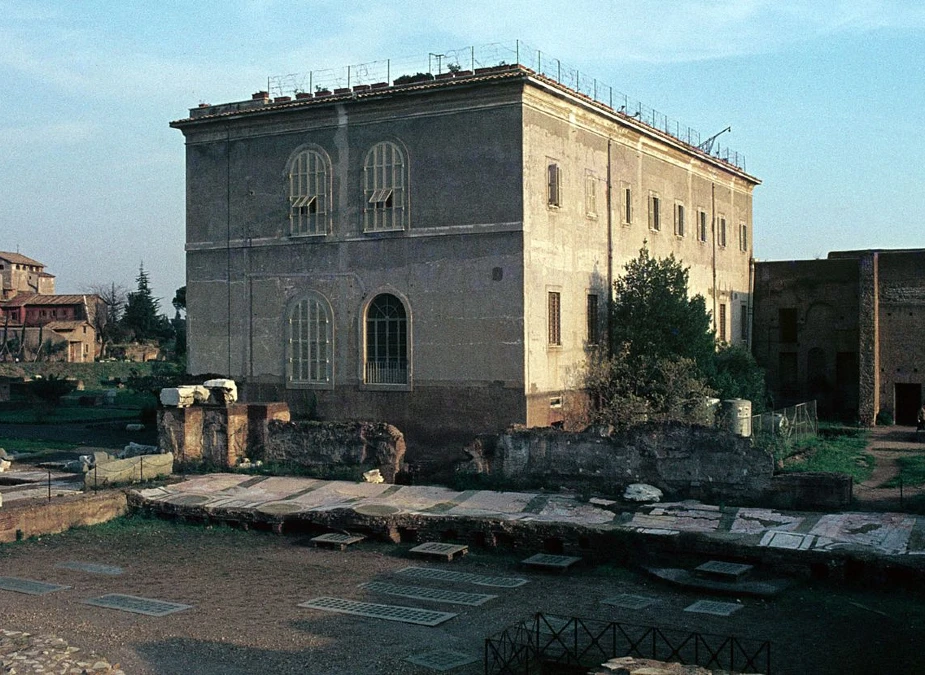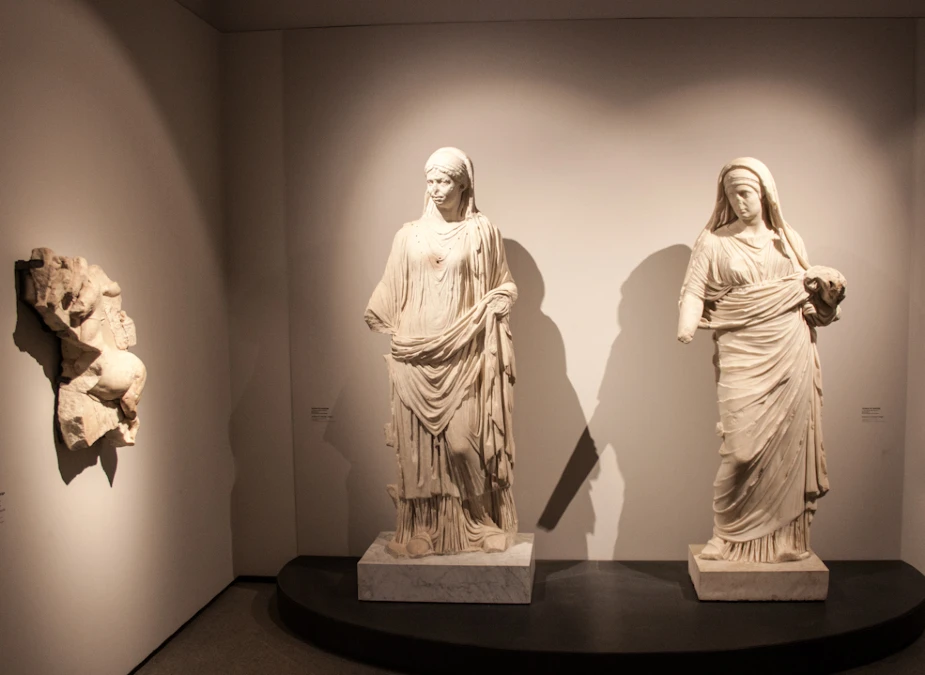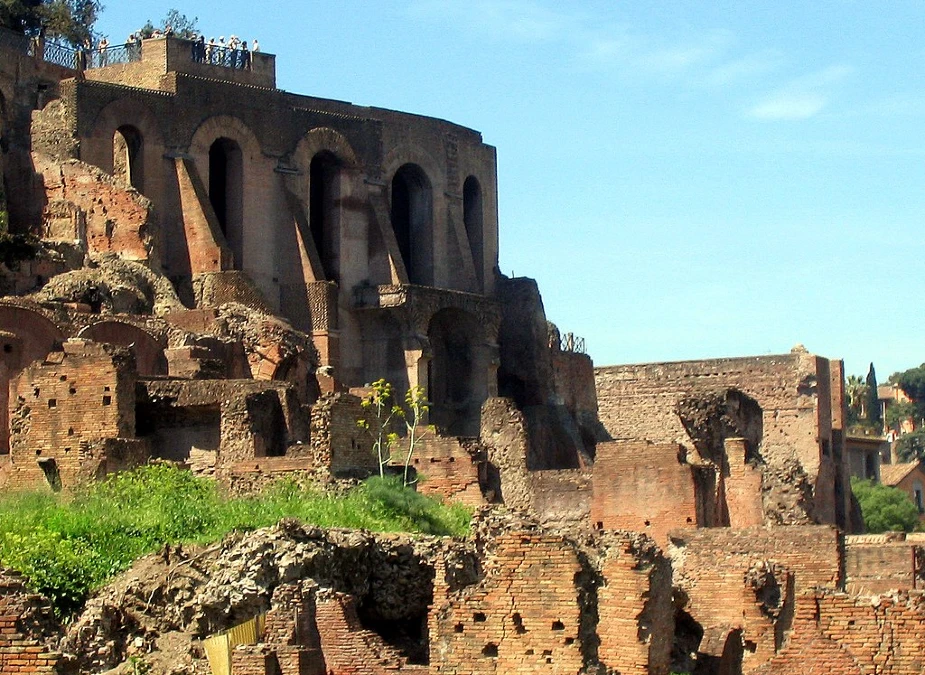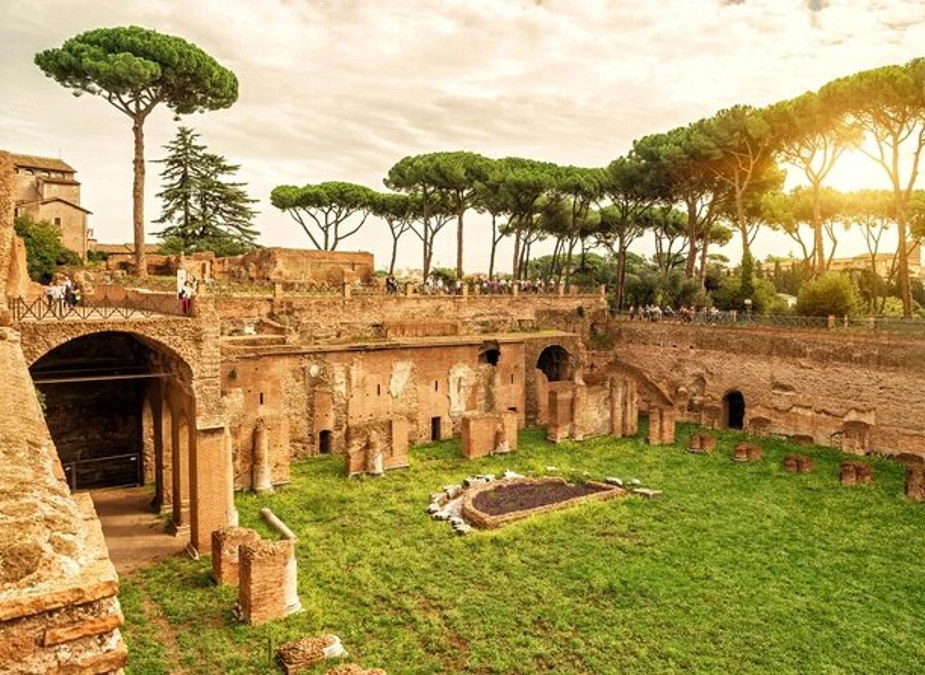Situated atop Rome’s famed Palatine Hill, the Palatine Museum, also known as the Museo Palatino, provides an in-depth look at ancient Roman history and culture. The museum provides an insight into Roman society from its earliest times till the collapse of the Empire. It was established to hold archaeological artifacts from ongoing excavations.
See objects from the height of the Imperial Empire, including mosaics and frescoes, sculptures and inscriptions from the Republic, and prehistoric Rome’s utensils and ceramics. The noteworthy displays are the Farnese Collection, the Augustus statue, and the paintings from the House of Livia. Delve deep into this guide to learn about the notable collections and exhibitions in the Museum.
🕛Opening Hours: 9.30 am to 6 pm
🎗️Best Time: Early morning of Spring and Fall
📍Address: Central of Palatine Hill. Get Directions
Pro Tip: Access to the Roman Forum, the Colosseum, and the Palatine Museum is often provided by a single ticket, which makes it easier to cut down on wait times.
Location
The Palatine Museum, also known as the Museo Palatino, is located on Palatine Hill in Rome, Italy.
Address: Parco archeologico del Colosseo, 00186 Roma RM, Italy. Get Directions
How to Reach Palatine Museum
If you start from any point on Palatine Hill, you can see many signs that will guide you to all the major attractions, including the Palatine Museum. Look for the signs showing Museo Palatino or Palatine Museum.
If you are near the main entrance on Via di San Gregorio, proceed to the ticket office and admission gate. After going past the gate, take the path leading up the hill. As you travel up the hill, you will come across magnificent gardens and historic ruins. The trail is well-marked and picturesque.
The Palatine Museum is located in the center of the hill. It stands out among the old ruins since it is a comparatively recent building.
Opening Hours

The timings of the Palatine Museum vary throughout the year but it always opens at 9.30 am. However, the last entry will always be an hour before closing. The Palatine Museum typically follows these general hours of operation:
January 2 to February 15: 9.30 am to 4.30 pm
February 16 to March 15: 9.30 am to 5 pm
March 16 to the last Saturday of March: 9.30 am to 5.30 pm
Last Sunday of March to August 31: 9.30 am to 6 pm
Last Sunday of March to August 31: 9.30 am to 6 pm
September 1 to September 30: 9.30 am to 7 pm
October 1 to the last Saturday of October: 9.30 am to 6.30 pm
Last Sunday of October to December 31: 9.30 am to 4.30 pm
Best Time to Visit
Summer (June to August) and the big holidays such as Christmas and Easter are the busiest travel times in Rome.
💡Pro Tip: Avoid visiting outside these hours to bypass the biggest crowds.
Seasons
Spring (March to May): There are fewer people than in the summer, and the weather is pleasant. You get the best view of blossoming gardens on Palatine Hill.
Autumn (September to November): Like spring, autumn has excellent weather and fewer visitors than the summer’s busiest months, resulting in a more laid-back and pleasurable experience.
Time of Day
Early Morning: Go as soon as the museum opens to avoid big crowds. Then, you can enjoy the ruins and displays in a more sedate setting.
Late Afternoon: Since many visitors depart by this time, going there late afternoon might also be a wise choice. But before it closes, allow enough time to visit the hill and the museum.
Weekdays vs. Weekends
Weekdays
The lines are shorter, especially if you arrive early. You’ll have a more comfortable experience and can tour the Colosseum at your own speed rather than feel pressured by crowds.
Weekends
More guided tours are offered, which is an excellent way to learn more about the Colosseum’s history
History
The Palatine Museum, or Museo Palatino, was founded to hold the numerous items discovered during major archaeological excavations on the hill. These excavations, which began in the 18th century and continue to this day, have uncovered the remnants of palaces, temples, and other structures, affording unique insights into ancient Roman society.
Early Beginnings (19th century)
The narrative begins in the nineteenth century, during a revived interest in classical civilizations. Large-scale excavations on Palatine Hill, led by people such as Napoleon III, yielded an abundance of antiquities. These included sculptures, pieces of frescoes, and ordinary things that provided insight into the lifestyles of Romans who lived on the hill.
The First Palatine Museum
The first Palatine Museum, founded in the late nineteenth century, was placed on the hill’s bottom level of the Farnese building to house these artifacts.
Unfortunately, this iteration was short-lived. In 1882, the structure was dismantled to improve the link between the Roman Forum and Palatine Hill. The collection was then moved to the Museo delle Terme (National Roman Museum).
New Home (20th Century)
The narrative does not end there. The Palatine Museum embarked on a new chapter in the early twentieth century. Archaeologist Alfonso Bartoli, who saw the value of displaying the Palatine Hill’s rare treasures in their natural setting, advocated for establishing a new museum dedicated only to the hill’s history.
The old Monastery of the Visitation, built in the 1860s on the foundations of Domitian’s palace, was chosen as the venue. In the 1930s, Bartoli constructed the Antiquarium Palatino (Palatine Antiquarium) within the monastery walls.
Modernization and Growth
Throughout the twentieth century, the museum underwent repairs and modifications. In the 1990s, coinciding with Augustus’ Bimillennium (the 2,000th anniversary of his birth), the museum was rearranged and remodeled to be more user-friendly. Multimedia installations were used to improve the visiting experience.
The Collections

The Palatine Museum’s collections are organized into various divisions, each focused on a distinct aspect of Roman history and culture. The objects date from the early days of Rome to the fall of the Empire, demonstrating the growth of Roman art, architecture, and daily life.
1. Prehistoric and Archaic Rome
This part lets you see items from Rome’s early past, long before it became an empire. Pottery, utensils, and other ordinary things are on exhibit, providing insight into the life of Palatine Hill’s early residents.
2. Republican Rome
Artifacts from the Republican era include sculptures, inscriptions, and architectural remnants. These objects illustrate the political and social developments during this period, such as the formation of the Roman Republic and its extension over the Mediterranean.
3. Imperial Rome
The Imperial Rome area is the museum’s core, displaying items from the height of the Roman Empire.
Highlights include:
- An extensive collection of sculptures and busts of emperors, gods, and historical characters demonstrate the Romans’ creative abilities, culture and politics.
- Magnificently preserved mosaics and frescoes from Roman homes and public buildings representing Roman mythology, daily life, and aesthetic tastes.
- Models of essential buildings and structures on Palatine Hill, such as the Domus Augustana and the House of Livia.
4. Daily Life in Ancient Rome
This section features a variety of artifacts depicting ancient Romans’ daily lives. Home utensils, jewelry, clothes, and toys represent Rome’s material culture.
Explore Beyond colosseum!
Go beyond ordinary experiences with our world-trusted partners.
Notable Exhibits
While the Palatine Museum is full of intriguing objects, a few displays stand out for their historical relevance and artistic beauty.
1. The Augustus statue
One of the museum’s most well-known items is the statue of Augustus, the first Roman emperor.
This monument is a prime example of Roman portraiture and propaganda, presenting Augustus as a young and idealized leader.
The statue’s intricate craftsmanship and historical significance make it a tourist must-see.
2. The Farnese Collection
The Farnese Collection, gathered by the affluent family, has a diverse range of Roman sculptures and antiquities.
Statues of Hercules and other legendary characters stand out, demonstrating the Romans’ love of Greek art and mythology.
3. Frescoes of the House of Livia
The House of Livia, the home of Emperor Augustus’ wife, Livia Drusilla, is famous for its breathtaking paintings.
These wall paintings portray beautiful garden themes with precise images of plants, birds, and other wildlife, demonstrating the Romans’ appreciation for nature and their excellent creative methods.
4. The Domus Flavia
Emperor Domitian built the palace complex, which included the Domus Flavia. You can explore the remnants of this majestic tower, which has substantial reception rooms and beautiful marble flooring.
The Domus Flavia exemplifies the grandeur and architectural ingenuity of the Roman emperors.
5. The Farnese Hercules
One of the museum’s most renowned items is the Hercules statue from the Farnese Collection. The statue shows Hercules in repose, leaning on his club with the skin of the Nemean Lion dr
aped over it.
The statue’s massive size and precise physique make it a standout piece of Roman sculpture.
Palatine Museum Layout
Palatine Museum consists of two levels with 10 rooms and outdoor areas. Here is an overview of the layout of the Palatine Museum:
Ground Floor
At the Entrance Hall, you can buy tickets, acquire maps, and learn about the museum and other attractions. Restrooms and lockers are available for convenience.
Room 1
Pottery, tools, and artifacts from the early settlements on Palatine Hill
Room 2
Sculptures, inscriptions, and architectural fragments from the Republican period
Room 3
Busts and statues of emperors, gods, and significant historical figures
Room 4
Everyday objects such as household utensils, jewelry, clothing, and toys
Room 5
Wall paintings and floor mosaics from Roman homes and public buildings
Room 6
Scale models of significant buildings and structures on Palatine Hill
First Floor
Room 7
Statues and artifacts related to Roman mythology
Room 8
Busts and statues of historical and legendary figures
Room 9
Artifacts from the palace complex built by Emperor Domitian
Room 10
Temporary exhibits focusing on various aspects of Roman history and culture
Outdoor Areas

Gardens and Open-Air Ruins
Remains of historic structures and nicely kept gardens

Paths and Viewing Points
Scenic walkways and vantage platforms offer panoramic views of Rome
Vacatis Tips for Visiting Palatine Museum
Take into account the following advice and suggestions to get the most out of your trip to the Palatine Museum:
- To learn more about the history and treasures of the Palatine Hill, take a guided tour.
- Both the museum and the nearby archeological site are large. Make time to explore for at least two or three hours.
- Usually, photography is permitted without using flash due to consideration for the comfort of other guests and the antiques.
- At the entry, you can pick up a map and any applicable educational booklets to assist you in navigating the museum and comprehending the exhibits.
- Due to the occasionally difficult ground surrounding Palatine Hill, a good bit of walking is involved. Put on comfortable footwear.
- There are sitting places and restrooms accessible throughout the place.
FAQs
1. What can I see in the Palatine Museum?
You can see daily objects, mosaics, and sculptures from the Republic to the Empire. View the frescoes in the House of Livia, the Farnese Collection pieces, and the statue of Augustus. Don’t miss the massive Farnese Hercules monument and the ruins of Domus Flavia.
2. What is the best time to visit the Palatine Museum?
Stay away from holidays and summertime crowds. Go on weekdays when things are more relaxed. Crowds will be less in the early mornings or late afternoons. The spring (March to May) and fall (Sept to Nov) seasons provide moderate tourist numbers and pleasant weather.
3. Do I need to buy a separate ticket for the Palatine Museum?
A separate ticket is not needed to enter the Palatine Museum. It is accessible with a single ticket that also gives entry to the Roman Forum, Colosseum, and Palatine Hill.
4. Are there seating areas in the museum?
Yes, there are seats scattered throughout the exhibitions of the Palatine Museum.
5. How long should I plan to spend at the museum?
Give visiting the Palatine Museum two to three hours. Allow more time to take a guided tour for a deeper dig.
Featured Image : Wikimedia.org



